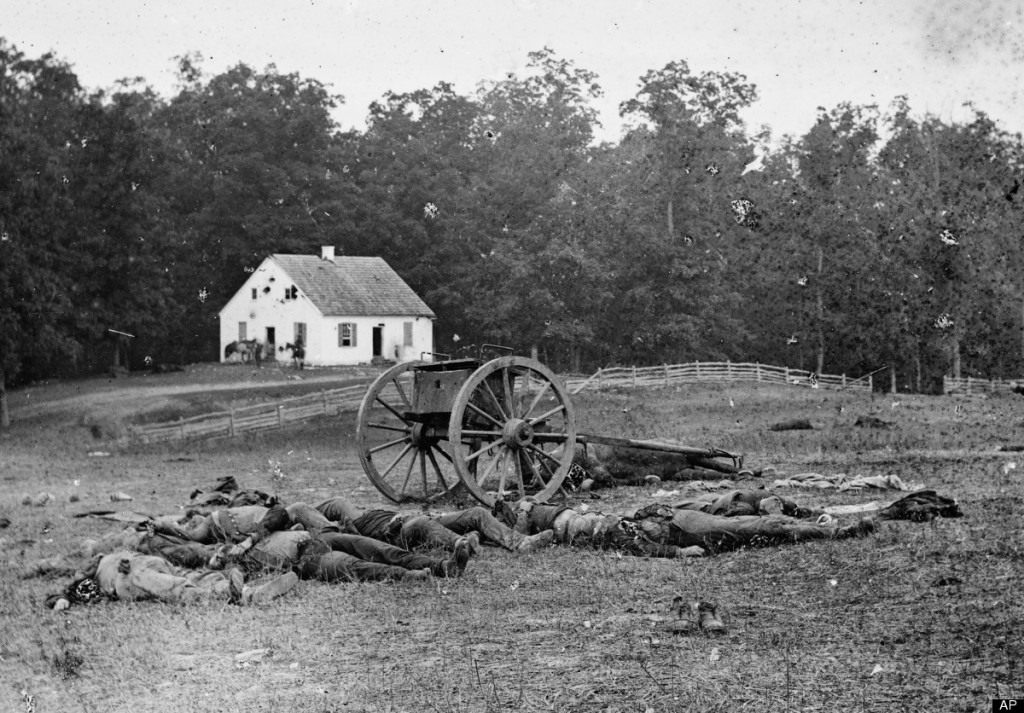All CLEP Humanities Resources
Example Questions
Example Question #268 : Ap Art History
All of the following painters were Impressionists except __________.
Henri Matisse
Édouard Manet
Claude Monet
Paul Cézanne
Pierre-August Renoir
Henri Matisse
Impressionism was a significant artistic movement developed in France during the late nineteenth century that utilized visible brushstrokes, representations of natural light, and everyday scenes. Challenging traditional ideas of art, the movement was initially derided by critics, but proved hugely influential. Its leading artists included Éduouard Manet, Claude Monet, Pierre-Auguste Renoir, and Paul Cézanne. Henri Matisse was a full generation younger than the impressionists, and was highly influenced by them, but helped develop modern art in the early twentieth century.
Example Question #81 : Nineteenth Century 2 D Art
The above work of art is an example of the artistic movement known as __________.
Post-Impressionism
Cubism
Realism
Neoclassicism
Expressionism
Post-Impressionism
This painting, an 1899 self-portrait by Vincent van Gogh, stands firmly in the tradition of post-impressionism. Post-impressionists took many of the elements of the Impressionists of a generation earlier, including visible brushstrokes, emotional concerns, and everyday scenes, and pushed them further. As seen in this work, the paint is extremely thick and textured, with bright, almost unrealistic colors sharpening the image.
Example Question #271 : Ap Art History
The Hudson River School was a group of artists known for making what kind of paintings?
Landscapes
Religious icons
History paintings
Still lifes
Portraits
Landscapes
The Hudson River School was a group of painters in the early part of the nineteenth century who gathered in communities along the Hudson River in New York. These artists were heavily inspired by the romantic movement coming out of Europe and painted dramatic landscapes. Prominent members of the Hudson River School were Thomas Cole, Asher Durand, and Frederic Edwin Church.
Example Question #271 : Ap Art History
The French painter who was the official painter for the rule of the Emperor Napoleon I was __________.
Jacques-Louis David
Antoine-François Callet
Eugène Delacroix
Théodore Géricault
Alexander Kucharsky
Jacques-Louis David
Jacques-Louis David first made a name for himself as a historical painter in the 1780s, but his republican sympathies meant he was allied with French revolutionaries. This benefitted him most by allowing him to become the Emperor Napoleon's official court painter. Famous for his portraits of Napoleon, and particularly his large Coronation of Napoleon from 1806, David's style featured bold expressions, bright colors, and dramatic poses.
Example Question #1 : Identifying Artists, Works, And Schools Of 2 D Visual Art

The above photography was made by which notable American artist?
Willard Van Dyke
Alfred Stieglitz
William Page
Matthew Brady
Ansel Adams
Matthew Brady
The work of Matthew Brady during the American Civil War pioneered many notable aspects of photography, which was still a new medium and had mostly been devoted to portraiture. Brady's willingness to document the Civil War by going to battlefields reframed the possibilities for photography, notably allowing for the development of photojournalism.
Example Question #2 : Identifying Artists, Works, And Schools Of 2 D Visual Art
Who was the painter who chronicled the wildlife, particularly birds, of nineteenth century America?
John Singer Sargent
Gilbert Stuart
Frederic Remington
James Carroll Beckwith
John James Audubon
John James Audubon
John James Audubon was a Frenchman who came to America in 1803 to avoid the Napoleonic Wars. He made a name for himself in the early nineteenth century as a painter of wildlife and landscapes of the then vast American frontier. His The Birds of America, published in sections between 1827 and 1838, not only was a remarkable work of art by an American artist, but helped ornithology immensely in understanding avian wildlife in America.
Example Question #201 : Renaissance To Contemporary 2 D Art
The artistic movement known as Impressionism began in which country?
Spain
France
England
The Netherlands
Italy
France
Impressionism grew popular in the nineteenth century as a reaction to France's main artistic competition, the Salon de Paris. The Salon's judges valued grand themes, realistic portrayals, and fine brushwork, whereas the Impressionists focused on everyday scenes, emotional depictions, and visible, thick brushstrokes. Some of the major impressionists include Paul Cézanne, Édouard Manet, Pierre-Auguste Renoir, and Claude Monet.
Example Question #271 : 2 D Art
Which of the following grouping of artists were NOT part of the same art movement?
Paul Cézanne, Édouard Manet, Claude Monet
Pablo Picasso, Georges Braque, Fernand Léger
Jackson Pollock, Wassily Kandinsky, Mark Rothko
Jasper Johns, Robert Rauschenberg, Roy Lichtenstein
Vincent van Gogh, Henri Matisse, Joan Miro
Vincent van Gogh, Henri Matisse, Joan Miro
Vincent van Gogh, Henri Matisse, and Joan Miró were all connected as artists through their use of color and experimentation with forms. Nonetheless, each artist developed his own unique style that largely stood apart from other artists. Van Gogh's postimpressionistic style built on impressionism, while Matisse and Miro's deconstruction of form and representation exploded many of impressionism's notions of art.
Example Question #431 : Clep: Humanities
Which American artist is well-known for his paintings and sculptures of the American West?
Thomas Moran
John Singer Sargent
Frederic Remington
Ansel Adams
James Abbott McNeill Whistler
Frederic Remington
Frederic Remington was a native New Yorker who began his career as a painter and illustrator for magazines after the Civil War. After going on assignment to illustrate a magazine article on the Apache leader Geronimo in 1886, Remington began to paint and sculpt images of the American West exclusively. Remington's style was naturalistic and empathetic to his subjects, and also had a natural ability to capture accurate movement. Remington's images of the Old West are some of the most famous images of cowboys and Native Americans.
Example Question #271 : 2 D Art
Gustave Courbet is well known for developing and working in what style?
Expressionism
Impressionism
History painting
Realism
Romanticism
Realism
Gustave Courbet (1819-1877) was a French painter who reacted to the previous generation's bold romanticism and his contemporary critics' love of history painting by developing what he termed "realism." Courbet wished to use his painting to comment on social issues and values, which he felt were valuable topics on which a painter might focus. Courbet sought out landscapes, portraits, and still lifes that depicted the everyday in rough, honest brushstrokes.
All CLEP Humanities Resources



